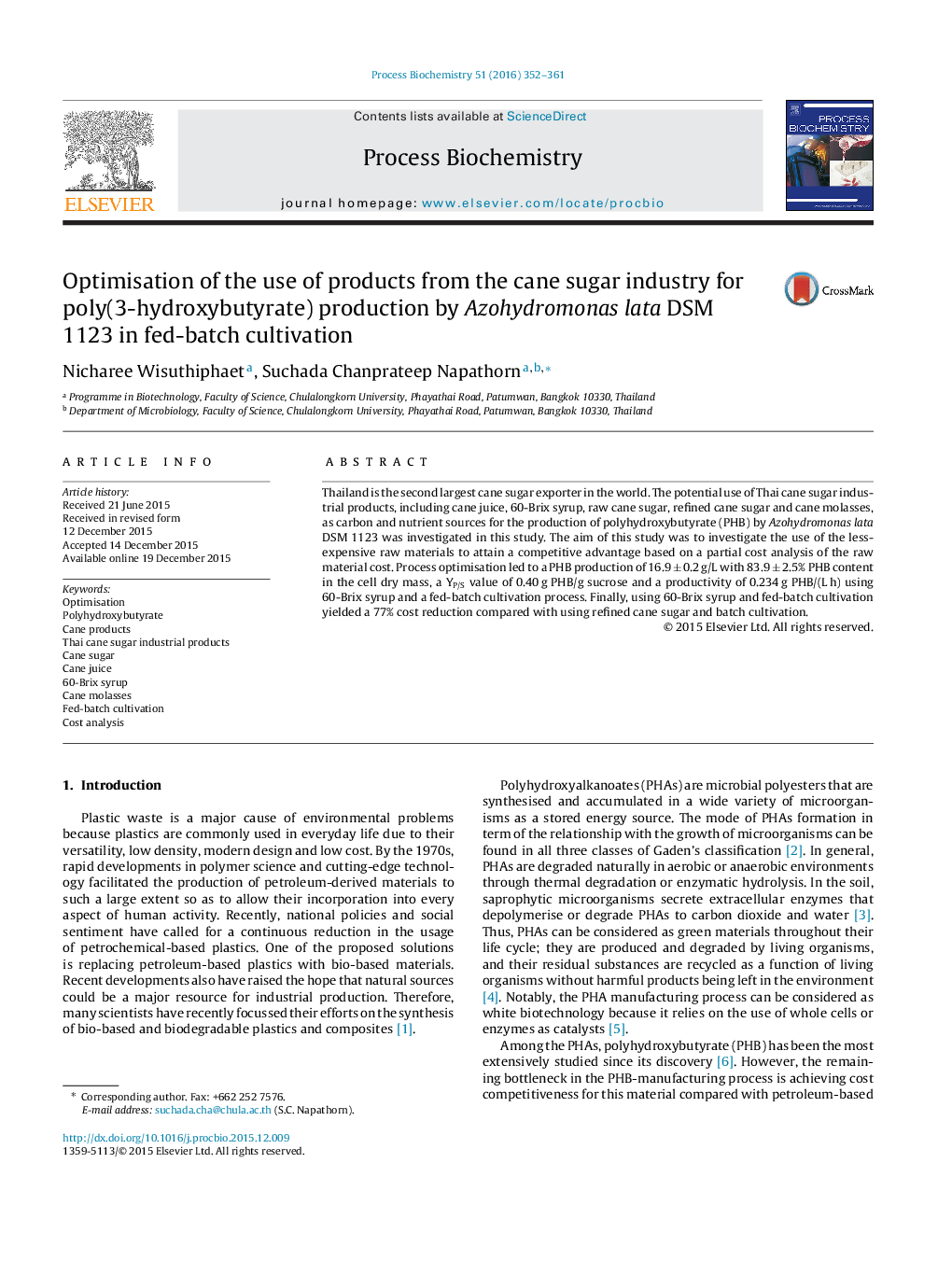| Article ID | Journal | Published Year | Pages | File Type |
|---|---|---|---|---|
| 34160 | Process Biochemistry | 2016 | 10 Pages |
•The potential use of cane products from the cane sugar industry for PHB production by Azohydromonas lata DSM 1123 was described.•The maximal PHA production of 16.9 ± 0.2 g/L, with 83.9 ± 2.5% PHB content and a YP/S of 0.40 g PHB/g sucrose, was obtained with 60-Brix syrup and the fed-batch cultivation technique.•The competitive advantage of using 60-Brix syrup together with the fed-batch cultivation technique was a 77% price reduction compared with using refined sugar and the batch cultivation technique.
Thailand is the second largest cane sugar exporter in the world. The potential use of Thai cane sugar industrial products, including cane juice, 60-Brix syrup, raw cane sugar, refined cane sugar and cane molasses, as carbon and nutrient sources for the production of polyhydroxybutyrate (PHB) by Azohydromonas lata DSM 1123 was investigated in this study. The aim of this study was to investigate the use of the less-expensive raw materials to attain a competitive advantage based on a partial cost analysis of the raw material cost. Process optimisation led to a PHB production of 16.9 ± 0.2 g/L with 83.9 ± 2.5% PHB content in the cell dry mass, a YP/S value of 0.40 g PHB/g sucrose and a productivity of 0.234 g PHB/(L h) using 60-Brix syrup and a fed-batch cultivation process. Finally, using 60-Brix syrup and fed-batch cultivation yielded a 77% cost reduction compared with using refined cane sugar and batch cultivation.
Graphical abstractFigure optionsDownload full-size imageDownload as PowerPoint slide
